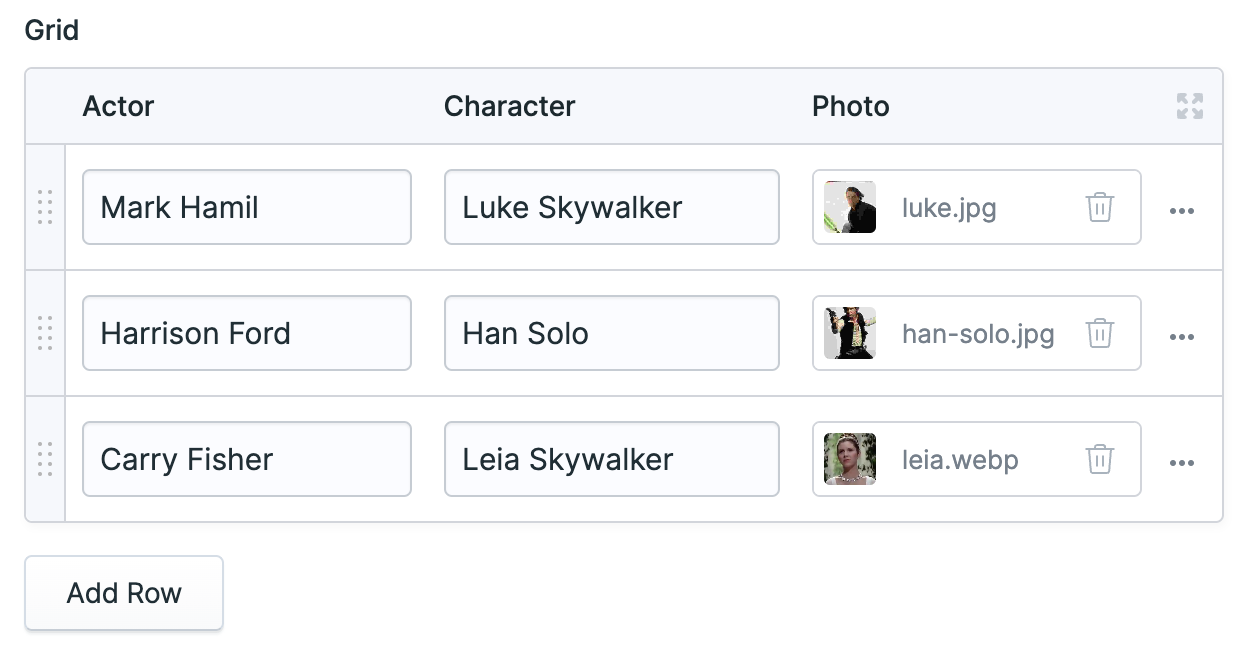Grid Fieldtype
The grid fieldtype is a meta fieldtype, a fieldtype that serves as a container for more fieldtypes. Any fieldtypes. Think of Grid as a spreadsheet, where each column contains any fieldtype, including another Grid. We lovingly refer to these as Inception Grids. Let's go deeper.

Fieldtypes#
You can use any fieldtypes inside a Grid. Just remember that because you can doesn't mean you should. Your UI experience will vary greatly. Make sure to compare the experience with the other meta-fields: Replicator and Bard.
Data Structure#
The Grid field creates a YAML collection (associative array).
Templating#
The example below would have the following data which can be looped through as a tag pair with access to the column data as variables.
cast:
-
actor: Mark Hamill
character: Luke Skywalker
-
actor: Harrison Ford
character: Han Solo
<h3>Star Wars Cast</h3>
<ul>
{{ cast }}
<li>{{ character }} played by {{ actor }}</li>
{{ /cast }}
</ul>
<h3>Star Wars Cast</h3>
<ul>
@foreach ($cast as $role)
<li>{{ $role->character }} played by {{ $role->actor }}</li>
@endforeach
</ul>
<h3>Star Wars Cast</h3>
<ul>
<li>Luke Skywalker played by Mark Hamill</li>
<li>Han Solo played by Harrison Ford</li>
</ul>
Options
min_rows
The minimum number of required rows.
max_rows
The maximum number of rows allowed. Once reached the Add Row button will disappear.
fields
A list of fields, each of which create their own column.
mode
The Grid is displayed as a table by default. If you have a large number of columns it can get pretty crowded. Choose stacked mode to group rows similar to Replicator. When Sneak Peek is enabled, Grids automatically toggle into stacked mode.
add_row
The Add Row button's label.
reorderable
Enable row reordering. Default: true.
Docs Feedback
Submit improvements, related content, or suggestions through Github.
Betterify this page

